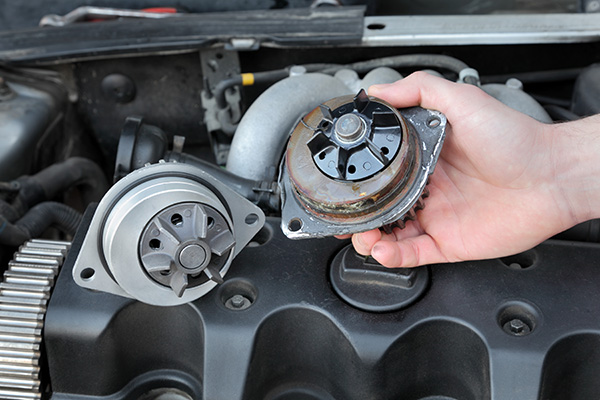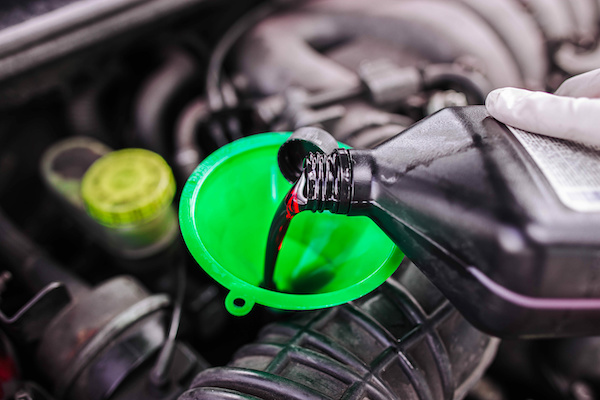Posted on 6/27/2025

Most drivers are aware that engine oil is crucial for keeping the moving parts in an engine properly lubricated. But motor oil does far more than simply reduce friction. In fact, it plays multiple roles in maintaining your engine’s performance, longevity, and cleanliness. If you’ve ever delayed an oil change because your car still seemed to be running fine, it’s important to understand what’s at stake. Regular oil changes do more than prevent metal-on-metal wear—they also support the engine’s cooling, cleaning, and sealing functions. Let’s take a closer look at three often-overlooked benefits of motor oil. 1. Motor Oil Helps Cool the Engine While the radiator and coolant system are primarily responsible for managing engine temperature, motor oil also plays a critical role in heat control. As the oil flows through the engine, it absorbs and carries away heat from internal components, particularly those that the coolant system ... read more
Posted on 5/23/2025

The water pump is a key part of your engine’s cooling system. It’s responsible for circulating coolant through the engine and radiator to keep temperatures under control. When the water pump starts to fail, the signs aren’t always obvious—until your engine overheats or breaks down. Knowing what to listen to and look for can help you catch problems early and avoid costly repairs. If you’re unsure whether your water pump is still in good shape, here are the warning signs to watch for. Squealing or Whining Noises One of the most common sounds linked to a failing water pump is a high-pitched squeal. A worn-out bearing inside the water pump pulley usually causes this noise. The bearing supports the pump shaft and allows it to spin smoothly. Over time, heat and wear take a toll, and the bearing starts to fail. You may hear the noise when cold starts or when the engine revs up. It can sound similar to a worn serpentine belt, so the best way t ... read more
Posted on 1/31/2022

Transmission fluid is similar to motor oil for the engine; it is necessary to keep your transmission parts lubricated and running smoothly. Often, your vehicle will give you warnings when your transmission fluid is low, dirty, or no longer effective. Here are 6 major signs that you should have your transmission fluid checked and serviced. Red puddles under your car - If you notice a red or pinky-colored liquid near your parked car, it's time to take a trip to the transmission repair shop. Roaring sounds during acceleration - Your transmission will become noisy when not properly lubricated. The sounds can be described as a whine or buzz. Hard time shifting gears - If your automobile is having difficulties changing gears or if the gears are slipping, please have your transmission fluid inspected. A chattering noise after starting the car - Any unusual sounds can be hard to ignore, and sometimes they can indicate transmission trouble. A burning smell - This could signify that you ... read more
Posted on 12/22/2021

If you're a driver, you need to know what precautions you can take to keep yourself and your car safe in the winter, and what to do if you find yourself in a situation where you're stranded. A crucial consideration when planning a drive in hazardous conditions is whether or not the trip is really required. It is very risky to drive on ice roads with low visibility, so if you don't need to go out of the house, stay put. If you must go outside, though, here are some pointers to keep in mind. Make sure your car is ready Before you go on your vacation, do a few quick maintenance checks on your vehicle to make sure it's ready for the elements. In fact, it is a legal obligation to have a good vision of the path ahead before you drive so your vehicle windows aren't coated in snow. In addition to defrosting the windshield, clean the snow from the headlights, roof, and the rear windscreen heater. It's possible that the windshield wipers have frozen to the glass and m ... read more
Posted on 11/29/2021
.jpeg)
Brake pads are absolutely necessary to your vehicle's safe operation. So, when one set of pads wears down quicker than the other, it's more than just an annoyance. It's a problem that can cause you to spend more money than you need to. Front and rear brake pads naturally wear abnormally. When your vehicle is moving, more strain is put on your front brakes, which can cause them to wear faster than your rear brakes. However, the problem is more complex if your brakes are wearing differently on the right vs. left side. Below are three common causes of this type of uneven wear: Problems with Brake Caliper The brake caliper's task is to press the brake pads against the rotors, causing your car to stop. Sometimes, the brake calipers can get stuck, which causes the brake pads to cling onto the rotors and wear them down faster. Uneven Surface on Rotors In some conditions, brake rotors can also wear unevenly, causing disc thickness variation. This can be due t ... read more